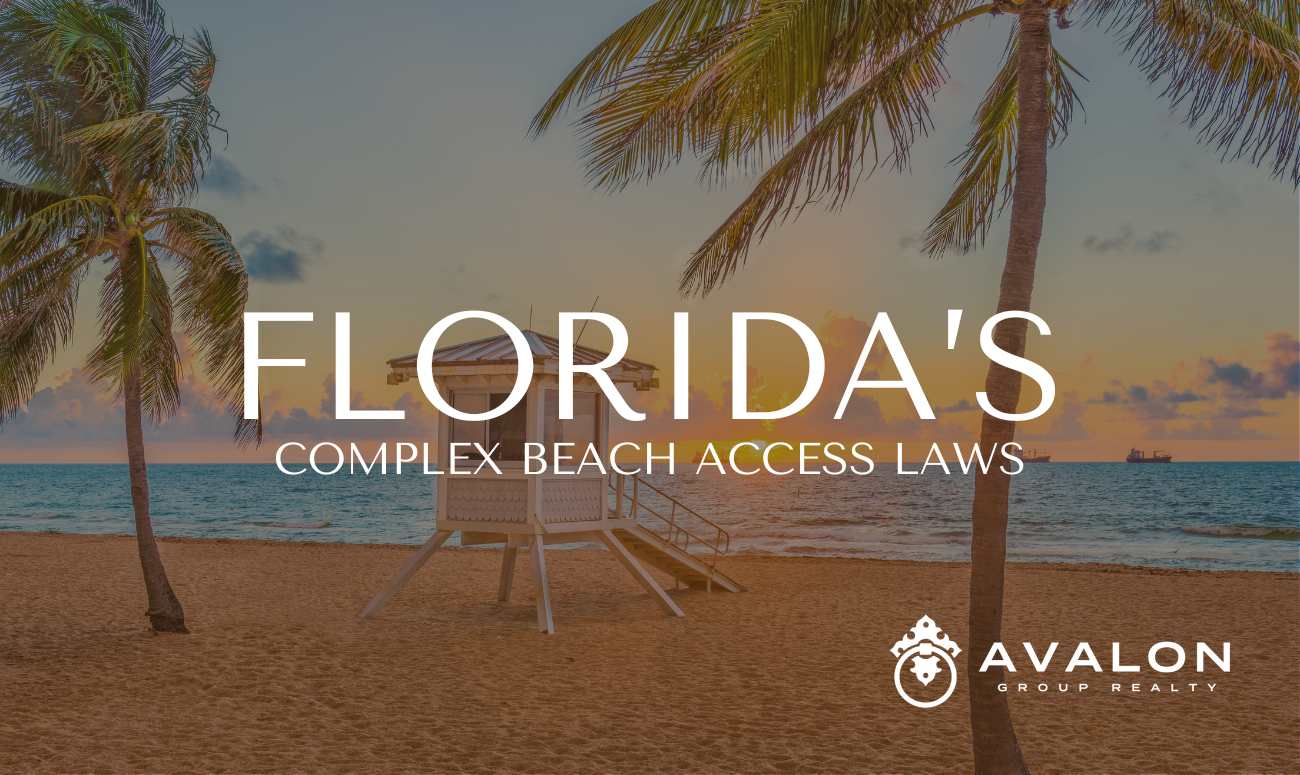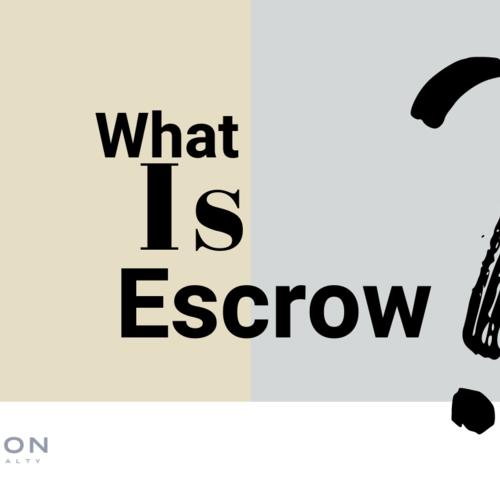Florida’s Complex Beach Access Laws – Update February 2025
Florida’s beaches have long been a source of joy, relaxation, and recreation for residents and visitors alike. With the recent legal clarifications, understanding beach access rights has become easier, ensuring that everyone can continue to enjoy our stunning coastline. Florida law upholds the balance between private property rights and public access, and many communities have taken steps to maintain friendly and welcoming beach experiences for all.
One of the most exciting developments for our beloved coastline is the new name for our gulf—the Gulf of America. This fresh designation reflects the pride and beauty of the waters that grace Florida’s shores, reinforcing its significance as a cherished natural treasure.
While certain stretches of beach are privately owned, many of Florida’s counties and cities are actively working to preserve access through dedicated public entry points, beach renourishment projects, and community-driven initiatives. Visitors can rest assured that there are plenty of stunning spots to sink their toes into the sand and enjoy breathtaking sunsets over the Gulf of America.
For those looking to explore Florida’s beaches with confidence, a little planning goes a long way. Checking local beach access points, understanding customary use laws, and supporting beach-friendly policies help ensure that everyone can experience the beauty of our shores for generations to come.
Whether you’re a longtime Florida resident or a first-time visitor, one thing remains certain—the Sunshine State’s beaches, now gracing the shores of the Gulf of America, are more welcoming than ever!
January 7, 2024 – Introduction
Florida’s extensive coastline contains a mixture of public and private beaches, with complex laws governing access and use. This article provides an overview of policies related to the Mean High Water Line, public vs. private beach ownership, customary use, and practical guidance for beachgoers.
Florida’s Complex Beach Access Laws: The Mean High Water Line
Importantly, the Mean High Water Line (MHWL) serves as an important legal boundary determining public and private beach sections in Florida. Specifically, the MHWL marks the average height of high tide over a 19-year cycle. Land below or seaward of this tidal line falls under state ownership for public use. In contrast, beachfront property above and landward of the MHWL can be private or public, depending on various factors.
In essence, this means wet sand areas are always public, while dry sand stretches may be either private or public. However, it’s an oversimplification that wet sand equals public and dry sand automatically means private. The specific property deeds, county laws, and customary use doctrines also play pivotal roles in demarcating beach access and policies.
Florida’s Complex Beach Access Laws: Public vs. Private Beach Ownership
Florida contains a mixture of city, county, state, and private beaches along its coasts. Local governments or entities like hotels, condos, businesses, clubs, and homeowner associations can hold private beach ownership and exclude or limit access. Specifically, around 60% of Florida’s beaches fall under private ownership.
Critically, for a private owner to exclude the public from dry sand areas, their deeded property lines must extend fully to the MHWL. If their boundary stops short of the high tide line, they cannot prevent public dry sand usage seaward of their lands. The graphic below illustrates how the public would retain access along the lower beach section:
Furthermore, even private beach owners with property lines extending to the tidal boundary may still have to tolerate public access. Local customary use laws can preserve the public’s access rights across such dry sand areas, despite private ownership.
Florida’s Complex Beach Access Laws: Customary Use Doctrines
Under longstanding court precedents, Floridians and visitors maintain customary use rights to access many privately-owned dry sand beaches. Specifically, if public recreational use of private beach sections has been ancient (50+ years), reasonable, continuous, and undisputed, these rights should continue uninterrupted per custom. The doctrine only applies to owners whose deeded boundaries reach the tidal line though.
Consequently, Florida counties and cities can pass customary use ordinances codifying this tradition of public access across specific private beach sections meeting the doctrine’s criteria. If owners suddenly disputed the public access, they would need court backing to revoke such rights after decades of established custom. Still, posted signs or barriers may caution beachgoers about purported private ownership claims, rightly or wrongly asserted.
Florida’s Complex Beach Access Laws: Implementation Confusion and Controversy
Despite the customary use doctrine’s long legal precedent, its on-the-ground implementation continues confusing and controversial in spots. When counties pushed to codify more certainly these public access rights to private dry sand areas in recent years, some beachfront property owners recoiled.
A wave of legal challenges erupted as private owners disputed the customary doctrines or claimed they no longer met its criteria after development changes. Areas like Walton County consequently witnessed turbulent battles between customary use proponents and resistant beach homeowners unappreciative of public hordes traversing “their” shorelines.
The clashes reveal the complex tradeoffs around balancing public coastal access desires against private property rights. Indeed, the scale of modern tourism and populations place strains upon traditional use rights devised for earlier eras. How these competing interests reconcile remains an unfolding drama across the state.
Florida’s Complex Beach Access Laws: Practical Guidance for Beachgoers
When visiting Florida beaches, keep an eye out for signage delineating ownership, rules, and use guidelines as you enter beach sections from access points or boardwalks. This communicates whether an adjoining stretch of sand falls under city, county, state, private, or customary use status.
Upon seeing “private beach” indicators, stay closer to the waterline when traversing these zones per recommendations. However, also check on the specific ownership claims if desired, as misleading signage occasionally crops up.
When identifying genuine private beach sections, avoid permanently stationing recreation gear like chairs, umbrellas, tents, etc. on these domains without permission. Hotels, condos, clubs, and homeowner groups actively police dry sand areas under their control in many cases.
For individual private homes, most owners tolerate customary use allowing public access near the shoreline. Still, the exclusive right to occupy and relax on the dry sand directly seaward of private lots generally stays in residents’ hands per local practice and norms.
Florida’s Complex Beach Access Laws: Be Considerate Beachgoers
All beachgoers should minimize disruptions to owners when exercising access rights to customary use or public beach zones adjoining private lots. Noise, trash, blocking access ways, using private facilities, interfering with landscape care, disturbing dune vegetation, etc can rightfully annoy residential owners.
A spirit of cooperation maintains community relations and protects the public interest of responsible coastal recreation access over the long term. Accordingly, common courtesy measures like cleaning up litter, controlling pets, and teaching children to respect the neighborhood help preserve those rights.
At some locations, the sheer volume of seasonal visitors undoubtedly overwhelms neighborhoods. In those cases, perhaps local governments can help address traffic, parking, signage clarity, facilities like bathrooms or showers, or other remedies easing problems.
Florida’s Complex Beach Access Laws: Beach Access Solutions
As Florida’s beaches witness rising pressures between public access desires and private owner rights, creative solutions can help ease tensions. Expanded public parking facilities during peak seasons, newer boardwalk routes guiding access ways, or additional lifeguard stations facilitating safety represent potential ideas. Compromises allowing limited public access stretches crossing private lots also offer possibilities worth entertaining. Ultimately, good faith negotiations striving to serve all stakeholder needs provide the best path to resolving conflicts.
Florida’s Complex Beach Access Laws: Navigating Legal Updates and Practical Applications
Florida’s beach access laws continue to evolve as lawmakers, property owners, and the public grapple with balancing public enjoyment of the state’s world-renowned coastlines with private property rights. Recent legal challenges and legislative actions have introduced updates that beachgoers should understand to ensure compliance while enjoying Florida’s beaches.
Recent Updates to Florida Beach Access Laws
- House Bill 631 (2018): This controversial law restricted local governments from declaring customary use of private beaches without a judicial ruling. This means counties must now prove in court that the public has the right to access certain dry sand areas, leading to heightened legal disputes.
- Shifting Boundaries Due to Climate Change: Rising sea levels and beach erosion are reshaping the Mean High Water Line (MHWL), the critical boundary separating public and private beach areas. These changes complicate enforcement of property rights and public access.
- Local Customary Use Ordinances: Despite HB 631, some counties have successfully defended their customary use ordinances in court, preserving public access in designated areas. Beachgoers should familiarize themselves with local ordinances before visiting.
Key Tips for Navigating Florida’s Beach Access Laws
To ensure compliance and avoid conflicts, follow these guidelines:
- Understand the MHWL: Familiarize yourself with the concept of the Mean High Water Line, which determines public access areas. If in doubt, stay close to the wet sand to avoid trespassing on private property.
- Check Local Regulations: Different counties may have unique rules governing beach access. Review signage at access points or consult local government websites.
- Respect Private Property: Avoid setting up chairs, umbrellas, or other items on marked private property without permission.
- Know Your Rights: In cases of customary use disputes, you may have legal rights to access certain dry sand areas. Check with local authorities or legal experts if faced with conflicting claims.
Frequently Asked Questions (FAQ)
1. Can I walk along the beach in front of private homes?
Yes, you can typically walk along the wet sand area below the MHWL, which is public property. However, walking or lounging on the dry sand in front of private homes may be considered trespassing unless it falls under customary use rights.
2. What should I do if someone tells me I’m trespassing on a beach?
Remain calm and politely ask for clarification, such as whether the property is private and how boundaries are marked. If necessary, relocate to the wet sand area or a clearly public section of the beach.
3. How do I know if a beach is public or private?
Public beaches are typically marked with clear signage and have dedicated parking areas. Private beaches may have “No Trespassing” signs or barriers. Always check for local designations at the access point.
4. Can counties enforce customary use laws without court approval?
No, counties must seek judicial approval to enforce customary use rights on private dry sand areas per HB 631. This legal process often results in disputes and delays.
5. Are there penalties for trespassing on private beaches?
Yes, trespassing can result in fines or legal action. If you are unsure about ownership, stay in the wet sand area or contact local authorities for guidance.
Balancing Access and Ownership: Practical Solutions
To mitigate conflicts and enhance beach access, stakeholders can explore the following strategies:
- Public Education Campaigns: Increase awareness of beach access laws among residents and visitors.
- Improved Signage: Clearly mark boundaries between public and private sections of the beach.
- Collaborative Agreements: Encourage property owners to permit limited public access through voluntary agreements with local governments.
- Beach Nourishment Projects: Address erosion to preserve public beach areas and mitigate the impact of shifting MHWLs.
- Enhanced Access Infrastructure: Develop additional public access points, parking areas, and amenities to reduce reliance on private beaches.
Florida’s Complex Beach Access Laws: Conclusion
In summary, Florida boasts some of the world’s most outstanding beaches, but their governance falls markedly complex in places. Beachgoers should educate themselves on beach access laws, respect signage and barriers notifying of private ownership claims, and tread thoughtfully when crossing adjoining private lots to access public wet sand areas. We must pursue cooperative solutions allowing broad public access while respecting legitimate private property rights. Following these proper protocols allows everyone to responsibly enjoy Florida’s treasured shorelines now and for generations to come.
Florida’s Complex Beach Access Laws: What You Need to Know
Florida’s beaches are among the most beautiful in the world, attracting millions of visitors annually. Yet, navigating “Florida’s Complex Beach Access Laws” can feel like trying to interpret a maze. Public access is a cornerstone of Florida’s coastal appeal, but private ownership and legal disputes sometimes complicate this ideal.
The Basics: Public vs. Private Beaches
Approximately 90% of Florida’s beach and coastal access points are open to the public, making the Sunshine State a haven for beachgoers. However, the question of “public vs. private” often arises. As Aaron Hunt, Broker of Avalon Group Realty, explains, “Florida law generally allows the public access up to the mean high water line. Beyond that, private property owners might have rights that restrict public use.”
H2: How Florida Defines Beach Access
Under Florida law, the mean high water line serves as the boundary between public and private beach areas. But as Yvette Kim, Realtor with Avalon Group Realty, notes, “Natural changes to the coastline, such as erosion or accretion, can shift this boundary over time, creating legal gray areas.”
H3: Customary Use Doctrine
The customary use doctrine adds another layer to “Florida’s Complex Beach Access Laws.” This principle allows the public to access certain privately-owned beaches if they’ve been used for recreational purposes historically.
Pam Amante, Realtor with Avalon Group Realty, points out, “Although this doctrine aims to protect public enjoyment, it often leads to disputes when private owners challenge historical use claims.”
Regional Highlights: Navigating Coastal Variances
Southwest Florida’s Gulf Coast
The Gulf Coast’s pristine beaches are ideal for kayaking, canoeing, and enjoying nature’s tranquility. However, legal access varies greatly.
- Key Counties: Hernando to Collier
- Notable Areas: The Florida Keys and Rookery Bay Estuarine Reserve
As Nora Sturgill, another Avalon Group Realtor, emphasizes, “In areas like the Florida Keys, national marine sanctuaries help safeguard public access while preserving fragile ecosystems.”
Florida’s Panhandle: A Hidden Gem
The Panhandle’s “Forgotten Coast” features miles of undeveloped natural beaches. The region’s commitment to conservation ensures significant public access, with attractions like the Gulf Islands National Seashore and Apalachicola Estuarine Reserve.
“This area is a dream for nature lovers, with numerous aquatic preserves and state parks protecting beach access for all to enjoy,” shares Aaron Hunt.
Atlantic Coast: Balancing Urban and Natural
Stretching from Nassau County to Miami-Dade, the Atlantic Coast combines urban development with natural beauty. However, densely populated areas often see more disputes over beach access.
“In cities like Fort Lauderdale or Miami, public access points are essential to ensure everyone can enjoy Florida’s east coast,” explains Yvette Kim.
Addressing Disputes: Legal and Practical Advice
Know Your Rights
Whether you’re a local resident or a tourist, understanding your rights under “Florida’s Complex Beach Access Laws” is crucial. Florida’s constitution guarantees access to beaches, but enforcement may vary by location.
Seek Expert Guidance
Navigating these laws can be challenging, but that’s where local real estate professionals come in. “At Avalon Group Realty, we’re committed to helping our clients understand not just the property they’re buying but also the rights and responsibilities tied to it,” says Pam Amante.
FAQ Section: “Florida’s Complex Beach Access Laws”
- What is the mean high water line? The mean high water line is the boundary separating public beach areas from private property.
- Can I walk along a private beach in Florida? It depends. You can walk up to the mean high water line, but venturing beyond it may infringe on private property rights unless the area falls under the customary use doctrine.
- What is the customary use doctrine? It’s a legal principle allowing public access to private beaches that have been historically used for recreational purposes.
- How do I know if a beach is public or private? Look for signage or consult local regulations. When in doubt, stay below the mean high water line.
Conclusion
“Florida’s Complex Beach Access Laws” highlight the importance of balancing public enjoyment with private property rights. Whether you’re buying beachfront property or simply visiting, understanding these nuances can help you make the most of Florida’s stunning coastlines.
For more insights and guidance, contact Avalon Group Realty today. We’re here to help you navigate Florida real estate with confidence.
Visit: www.AvalonGroupTampaBay.com
Contact Aaron Hunt directly: 727-262-7920
Follow us on social media for daily tips and updates:
Facebook | Instagram | Twitter | LinkedIn | TikTok
Here is directions to St Pete Public Beach:




